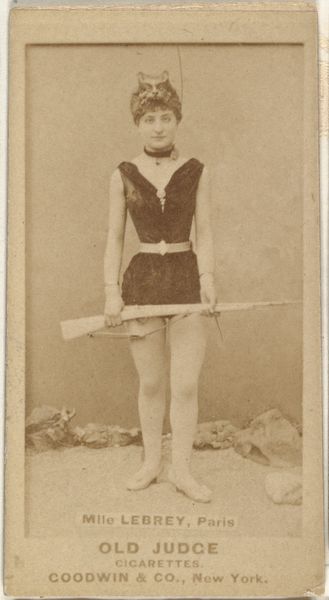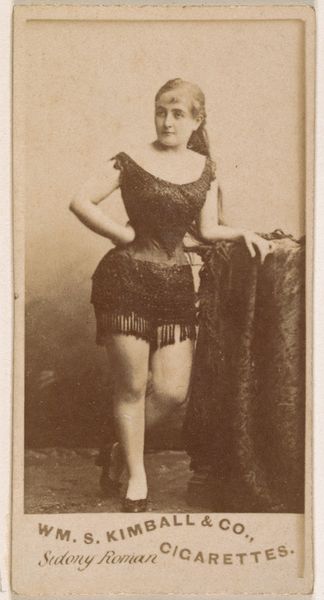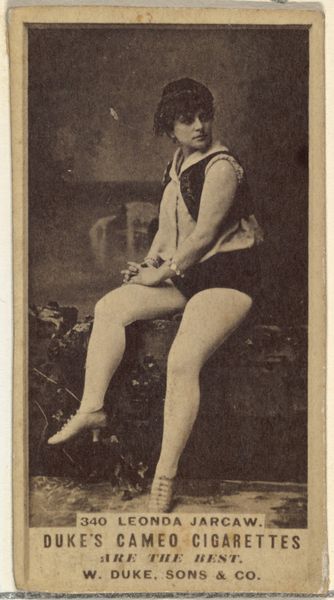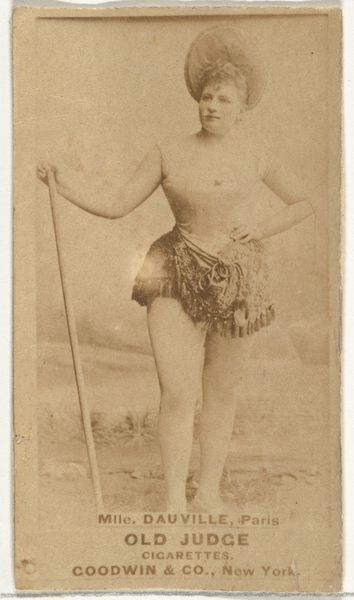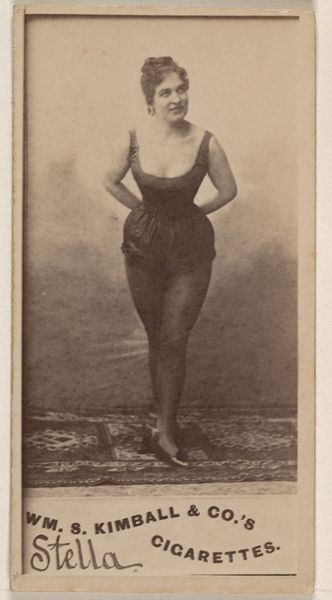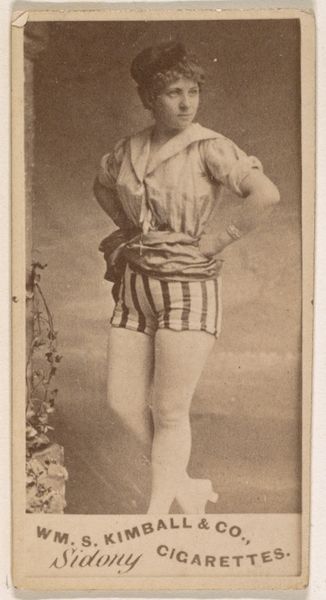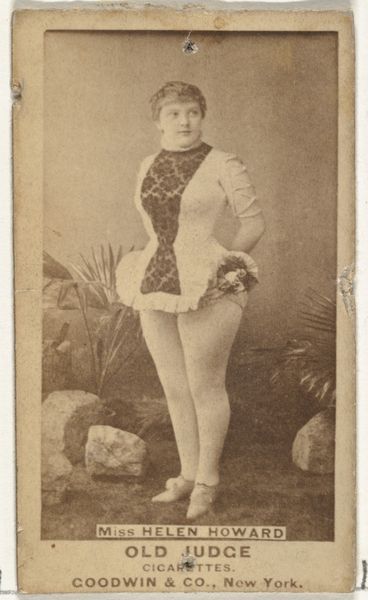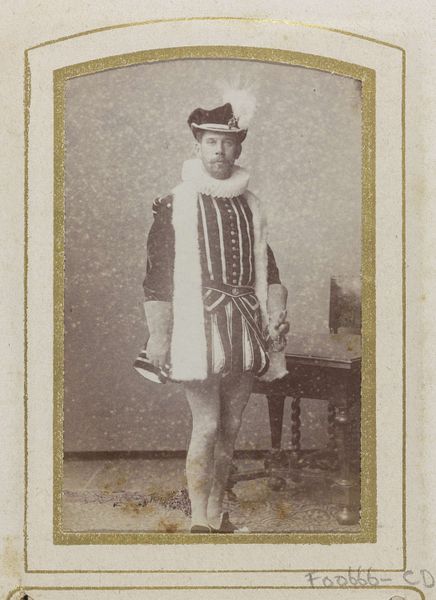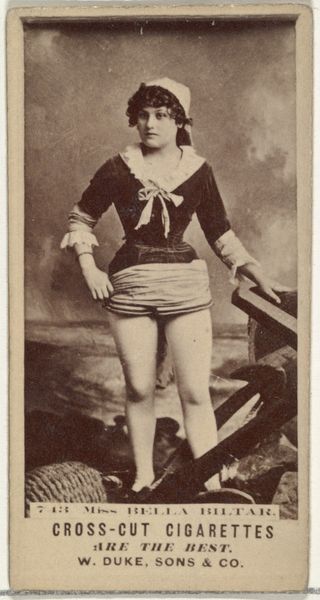
Mlle. Pitot, from the Actresses series (N203) issued by Wm. S. Kimball & Co. 1889
0:00
0:00
drawing, print, photography
#
portrait
#
drawing
# print
#
appropriation
#
figuration
#
photography
#
genre-painting
Dimensions: Sheet: 2 5/8 × 1 3/8 in. (6.6 × 3.5 cm)
Copyright: Public Domain
Curator: Here we have a fascinating artifact from 1889, a trade card from the Actresses series produced by Wm. S. Kimball & Company, purveyors of cigarettes. This particular card features Mlle. Pitot. Editor: It's quite striking, actually. The sepia tone lends a feeling of distance, and the somewhat unsettling juxtaposition of a theatrical woman posing with a rifle creates an intriguing dissonance. Curator: Indeed. The firearm definitely adds a layer of symbolic complexity. Kimball's company often appropriated imagery to cultivate associations, subtly suggesting power, sophistication, and perhaps a dash of rebelliousness to cigarette smoking. Editor: The composition is very controlled. The subject is centered and framed symmetrically. It feels formal and very staged, in tension with the hints of something wild. The line of the rifle mimics and extends her body, too. Curator: The use of actresses in advertising was widespread. By associating their products with known faces, they attempted to tap into the aspirational desires of the consumer, who were likely hoping to embody the elegance and prestige projected by actresses like Mlle. Pitot. Remember also, she stands for a public woman who occupies a place in popular culture. Editor: Though technically a print derived from photography, I notice that the card bears a quality suggestive of drawn portraits with linear economy. The flatness evokes a certain reserve or detachment from a real three-dimensional space. It’s rather arresting how the picture flattens everything, including its human subject. Curator: Think, too, about what Mlle. Pitot represents here. It reflects evolving cultural ideas surrounding femininity, performance, and visibility within the late 19th century public sphere. Kimball was selling an image just as much as cigarettes, and these were complex negotiations. Editor: The deliberate use of visual rhetoric points towards larger questions concerning how companies mold desire through celebrity. Kimball's cards thus served as potent conveyors of the time’s social fabric and developing aesthetics, creating the semiotic grounds we use for art criticism today. It still startles after a careful look. Curator: Looking at this, I keep thinking about the ways advertising acts as a historical record—revealing unspoken societal assumptions. Thanks for sharing your thoughts, I am struck how its image continues to challenge and reveal.
Comments
No comments
Be the first to comment and join the conversation on the ultimate creative platform.
